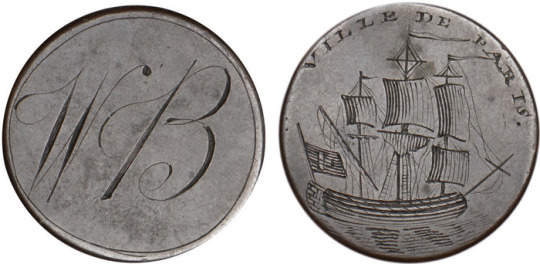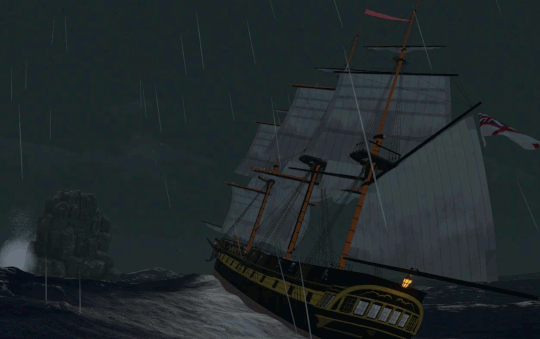#Ushant
Explore tagged Tumblr posts
Text

Ushant, France (by Patrick)
310 notes
·
View notes
Text

Phare de la Jument, Brittany, France: La Jument is a lighthouse in Brittany, Northwestern France. The lighthouse is built on a rock about 300 metres from the coast of the island of Ushant. There is also a very different lighthouse about 3 kilometres to the North, the Nividic lighthouse. Wikipedia
#La Jument#Phare de la Jument#Concrete Base#Stone Tower#solar power#Ushant#Bretagne#Brittany#France#europe
115 notes
·
View notes
Text
Yann Tiersen - Kerber live on Ushant - YouTube
youtube
A visual and sonic journey across the island of Ushant. Filmed in Yann Tiersen’s studio and landmarks across the island of Ushant, this film thoughtfully fuses music and landscape together, creating a world where the tangible and ethereal are one.
1 note
·
View note
Text



I've been cooking today (15% chance of followers shitting themselves immediately)
Follower!Kallamar/Ushant content cuz uh uuuuh brain worms???
#i calculated kali's height based on that other drawing i posted and#hes like 6'8“. in ushant's universe. holy shit.#anyway this is shockingly tender and exactly how i imagined it in my head but auugh#ushant is just so fucking. cream colored? hes a white ushant and i made him so vanilla puddinf colored#my lmab#ushant lamb#cult of the lamb#cotl kallamar#aye who allowed them to be gay in the temple‼️🗣️🗣️
30 notes
·
View notes
Text

Wind Mill on the Ushant Island, westernmost point of metropolitan France, Brittany region of France
French vintage postcard
#historic#photo#briefkaart#vintage#region#point#westernmost#sepia#photography#brittany#wind#mill#carte postale#the ushant island#postcard#postkarte#france#postal#tarjeta#ansichtskarte#french#old#ephemera#postkaart#ushant#island#metropolitan
17 notes
·
View notes
Text
LOOK ITS MY FUCKED UP LITTLE MANLET IN THE THIRD PIC EVERYONE LOOK



Old doodles i did for friends
(@i-eat-deodorant @delirisse @cult-of-the-rizz)
#this is what kali sees regularly when he looks down at ushant#nothing happened his expressions are just like that#my best friend did this i command all of you to look at these and all the others bc bean is to die for#ily bestie thank u#!!!!!!!!!
51 notes
·
View notes
Text

Sailor's love token for or from W B with an image of the Ville de Paris, late 18th century
The Ville de Paris, built at Rochefort, laid down in 1757 as Impétueux but renamed after Paris, the city that funded her construction. She was completed in 1764, a 90-gun first rate. She fought at the Battle of Ushant (1778) and sailed for the West Indies and Americas in 1781 and fought at the Battles of Fort Royal, the Chesapeake and St. Kitts. On 12 April 1782, at the Battle of the Saintes, she was captured by Admiral Hood on HMS Barfleur, under the command of Admiral Rodney. In September 1782 she was hit by a hurricane off Newfoundland on the voyage back to England and sank with the loss of all hands but one.
38 notes
·
View notes
Text
Around the world even faster than an IMOCA? Cross your fingers— the trimaran Sodebo Ultim 3 and its 7 crewmembers are going for an attempt at the Jules Verne Trophy, the outright fastest circumnavigation of the globe under sail! They crossed the start line off Ushant, France six hours ago, and must return in less than 40 days, 23 hours and 30 minutes to beat the current record!
Can they do it? Watch this space…
2 notes
·
View notes
Text
Sailing in stormy weather

HMS Surprise model in the naval simulation The Weather Gage
The sailing started near the Phare du Stiff (lighthouse) in Ushant and ended at Eddystone lighthouse and rocks, SSW off Plymouth Sound (state of 18th century / Smeaton's lighthouse ... currently the lighthouse is on land: Eddystone Lighthouse - Wikipedia)
Should post a picture of Eddystone lighthouse model some time later
#hms surprise#age of sail#sailing ship#napoleonic wars#simulation games#frigate#tall ship#warship#royal navy
5 notes
·
View notes
Text
Music of TURN
Round 8
(Round 7 will be tomorrow due to internet issues from the hurricane)
Take us Alive
2.02: Hard Boiled
Abe beginning his serious spywork in New York
I couldn't find much on the song, but I do think it fits the spy theme. "Keep your eyes open." "They'll never take us alive." and other lyrics of the like. I do find it funny the one scene where Townsend is keeping an eye on Abe, nice foreshadowing there.
youtube
Spanish Ladies
1.03: Of Cabbages and Kings
A traditional British naval song, typically describing a voyage from Spain back to England from the viewpoint of junior enlisted sailors of the Royal Navy. There's a broadside ballad with the same name that was registered on December 14th, 1624. But the oldest text seen is from the 1796 logbook of HMS Nellie. Likely sung during the War of the First Coalition.
The lyrics tell the story of the crew unable to determine their latitude via sighting as the distance between Ushant and the Scillies is wide (35 leagues according to the song.) So instead they use a method called sounding (geographical meaning, not musical) to determine the depth to locate themselves. (Which is measured in fathoms, and in the song they are 45 fathoms)
youtube
#turn music bracket#turn: washington's spies#turn amc#turn washingtons spies#culper spy ring#abraham woodhull#robert townsend#caleb brewster#spanish ladies#take us alive
2 notes
·
View notes
Text
The Princess of Wales embarked on Monday the 27th of September. At five o'clock in the afteroon the ship weighed anchor, and set sail. The weather was favourable at first, but changed after midnight. Continued their voyage until they were off Ushant, without any great inconvenience. The winds were variable, but the sea was not rough. When they had passed Ushant, however, they were overtaken by a most furious vendabal, thunderstorms, and immense waves. Had a thunderstorm every four or five hours during the rest of the voyage. "It was impossible not to be frightened."
The following Saturday, at 3 o'clock in the afternoon, the Princess entered the harbour of Plymouth, which is the firston the coast of England. "She could not have been received with greater rejoicings, if she had been the Saviour of the world." As soon as she left the boat, she went in procession to the church, where, it is to be hoped, God gave her the possession of all these realms for such a period as would be long enough to enable her to enjoy life, and to leave heirs to the throne.
—Catherine of Aragon’s voyage to England in 1501 (4 Oct. S. E. T. c. I. L. 4. f. 14.)
3 notes
·
View notes
Text
Events 7.27 (before 1920)
1054 – Siward, Earl of Northumbria, invades Scotland and defeats Macbeth, King of Scotland, somewhere north of the Firth of Forth. This is known as the Battle of Dunsinane. 1189 – Friedrich Barbarossa arrives at Niš, the capital of Serbian King Stefan Nemanja, during the Third Crusade. 1202 – Georgian–Seljuk wars: At the Battle of Basian the Kingdom of Georgia defeats the Sultanate of Rum. 1214 – Battle of Bouvines: Philip II of France decisively defeats Imperial, English and Flemish armies, effectively ending John of England's Angevin Empire. 1299 – According to Edward Gibbon, Osman I invades the territory of Nicomedia for the first time, usually considered to be the founding day of the Ottoman state. 1302 – Battle of Bapheus: Decisive Ottoman victory over the Byzantines opening up Bithynia for Turkish conquest. 1549 – The Jesuit priest Francis Xavier's ship reaches Japan. 1663 – The English Parliament passes the second Navigation Act requiring that all goods bound for the American colonies have to be sent in English ships from English ports. After the Acts of Union 1707, Scotland would be included in the Act. 1689 – Glorious Revolution: The Battle of Killiecrankie is a victory for the Jacobites. 1694 – A Royal charter is granted to the Bank of England. 1714 – The Great Northern War: The first significant victory of the Russian Navy in the naval battle of Gangut against the Swedish Navy near the Hanko Peninsula. 1775 – Founding of the U.S. Army Medical Department: The Second Continental Congress passes legislation establishing "an hospital for an army consisting of 20,000 men." 1778 – American Revolution: First Battle of Ushant: British and French fleets fight to a standoff. 1789 – The first U.S. federal government agency, the Department of Foreign Affairs, is established (it will be later renamed Department of State). 1794 – French Revolution: Maximilien Robespierre is arrested after encouraging the execution of more than 17,000 "enemies of the Revolution". 1816 – Seminole Wars: The Battle of Negro Fort ends when a hot shot cannonball fired by US Navy Gunboat No. 154 explodes the fort's Powder Magazine, killing approximately 275. It is considered the deadliest single cannon shot in US history. 1857 – Indian Rebellion: Sixty-eight men hold out for eight days against a force of 2,500 to 3,000 mutinying sepoys and 8,000 irregular forces. 1865 – Welsh settlers arrive at Chubut in Argentina. 1866 – The first permanent transatlantic telegraph cable is successfully completed, stretching from Valentia Island, Ireland, to Heart's Content, Newfoundland. 1880 – Second Anglo-Afghan War: Battle of Maiwand: Afghan forces led by Mohammad Ayub Khan defeat the British Army in battle near Maiwand, Afghanistan. 1890 – Vincent van Gogh shoots himself and dies two days later. 1900 – Kaiser Wilhelm II makes a speech comparing Germans to Huns; for years afterwards, "Hun" would be a disparaging name for Germans. 1917 – World War I: The Allies reach the Yser Canal at the Battle of Passchendaele. 1919 – The Chicago Race Riot erupts after a racial incident occurred on a South Side beach, leading to 38 fatalities and 537 injuries over a five-day period.
1 note
·
View note
Text

This Day in History: Battle of Ushant
On this day in 1778, a Revolutionary War battle is fought just off the coast of France. Wait. A battle near France?! In the Revolution? Yes, you read that correctly.
The Battle of Ushant was a pretty big blow to the British Navy, mostly because the Royal Navy believed itself to be unbeatable. Making matters worse, it was the second such incident in a matter of months. American Captain John Paul Jones had also delivered an earlier humiliating blow at Whitehaven.
Let’s just say that the British didn’t quite know what to do with the situation.
The story continues here: hhttp://www.taraross.com/post/tdih-battle-ushant
4 notes
·
View notes
Text
I have another lamb that I finally got around to drawing I just call him ushant for now



he's 4'11 and his neurons have been so fried from being resurrected so many times he usually just thinks with his dagger more than with logic. ushant never physically has the crown on his head bc it's always in dagger form under his cloak.
he also has an affinity for. squid. they're kinda bad together but uuuh maybe I'll make it work out good? idfk
#ough do not perceive me for making this ship i just really like the cephalopod bishop#and i wanted another lamb that is just really emotionally and mentally the opposite of chimera bc theyre so stoic#fun fact! ushant begged kallamar to let him kill him at knifepoint while crying and trying to actually kill him bc ushant is#so scared of narinder. he wanted to be free from him so badly he absolutely stabbed follower nari after thr battle bro was NOT playing aroun#cult of the lamb#my lmab#ushant lamb#cotl kallamar#cotl#cotl lamb
21 notes
·
View notes
Text

Rabbit formed rock formation on the Ushant Island, Brittany region of France
French vintage postcard, mailed in 1911 to Paris
#historic#rock#photo#briefkaart#vintage#region#rabbit#sepia#brittany#photography#carte postale#the ushant island#paris#postcard#mailed#postkarte#france#postal#tarjeta#ansichtskarte#french#old#ephemera#postkaart#1911#ushant#island#formation#formed
7 notes
·
View notes